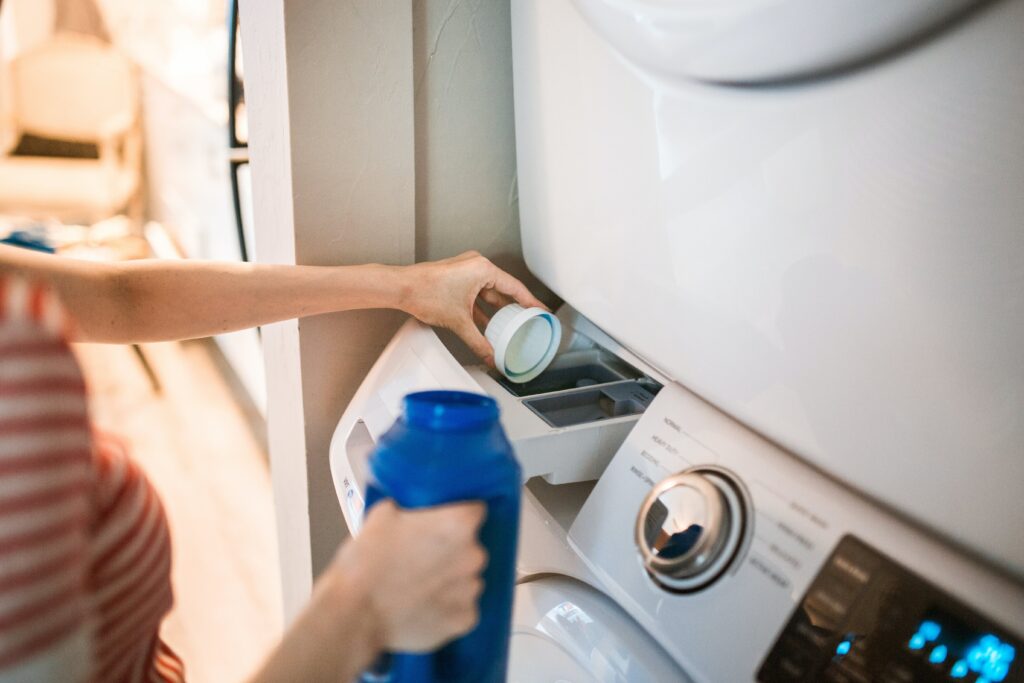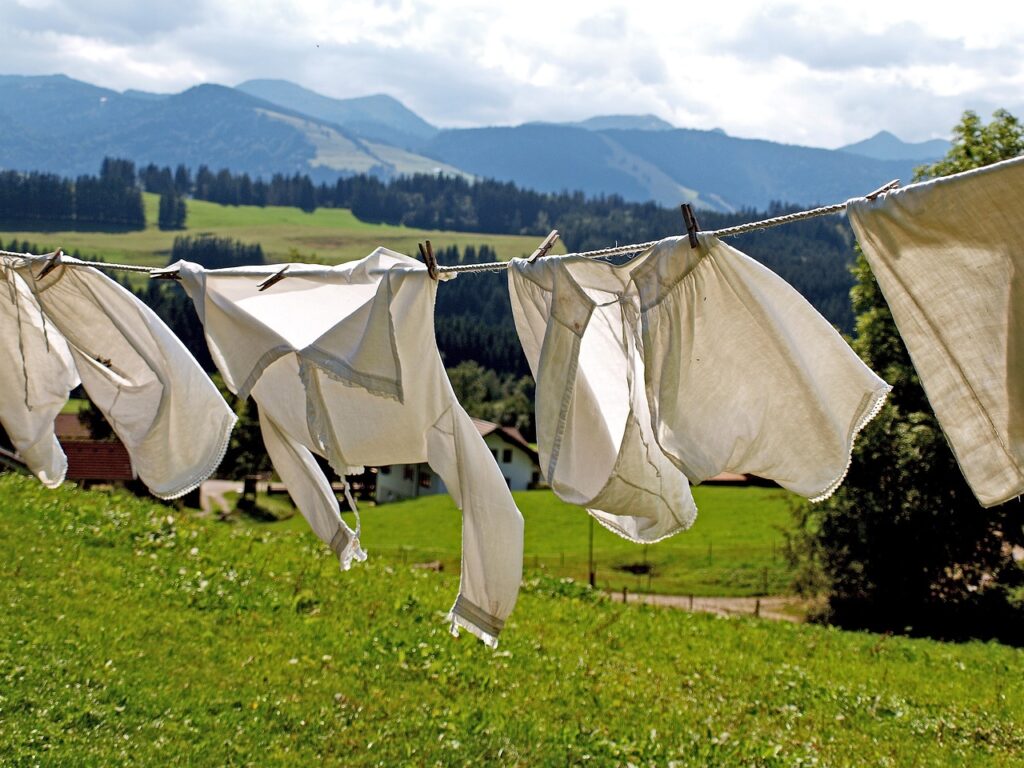The act of washing clothes, a daily chore for many, holds the power to shape the health of our planet. Traditional laundry practices can be harmful to the environment one of the reasons is the excessive use of water and energy. This contributes to climate change and other environmental issues. The use of chemicals in laundry detergents can accumulate in the environment, potentially causing harm to aquatic life.
As we delve into this exploration, we’ll uncover the transformative power of small, intentional actions. From the detergent you choose to the temperature of your wash, every decision holds the potential to tip the scale toward a greener, more sustainable future.
Here are some green laundry hacks that nurture both your clothes and the environment:
Wait for Full Load
Reducing the number of spins during laundry is an important step towards sustainable living. It not only saves water and detergents but also helps in reducing the overall environmental impact. By adopting such small yet effective changes, we can contribute towards a more sustainable future. Wait till you have enough clothes to load them in washer, make the most of each laundry cycle by washing full loads. This not only maximizes the efficiency of your washing machine but also reduces the number of loads you need to do, ultimately conserving water and energy.
less spins, less use of water and detergent, less harming the environment
How much laundry makes a full load?
The definition of a full load of laundry can vary depending on the capacity of your washing machine. It’s necessary to know the capacity of your washing machine as overloading the machine can lead to inefficient cleaning, increased wear and tear on the appliance, and higher energy consumption.
- Small Load: Around 3-4 kg of dry clothes
- Medium Load: Approximately 5-7 kg of dry clothes
- Large Load: About 8-10 kg of dry clothes
It’s essential to check your washing machine’s user manual or look for a capacity label inside the door or on the appliance to determine its specific capacity.
Cold Wash
Switching to cold water when washing clothes is an easy and effective way to reduce energy consumption. About 90% of the energy used by washing machines goes into heating water, so washing in cold water can significantly reduce energy consumption. Cold water is also gentler on fabrics, helping your clothes maintain their shape and color for a longer time.
saving the world might just start with your next load
Eco-Friendly Detergent

Traditional laundry detergents often contain harsh chemicals that can be harmful to the environment. These chemicals when released into the water bodies affect the health of aquatic organisms. Some of the common harmful components found in traditional laundry detergents include Phosphates (water softeners), Surfactants (cleaning agents), Chlorine Bleach (whitening agent) and Artificial Fragrances.
Choosing an eco-friendly detergent is a simple yet effective way for individuals to contribute to environmental conservation and promote sustainable living practices. These detergents typically contain a combination of natural, biodegradable, and sustainable ingredients. They opt for plant-based surfactants (derived from plants such as coconut or palm) instead of using synthetic surfactants, Enzymes that are biodegradable and can enhance the cleaning power of the detergent, Citrus or Oxygen Bleach instead of Chlorine Bleach, Natural Fragrances which includes essential oils or natural extracts for a pleasant scent and alternative water softening agents that are less damaging to the environment.
Unlike traditional detergents that come in plastic containers Eco-friendly detergents often come in packaging that is designed to minimize waste. This may include recyclable or compostable materials and concentrated formulas that require smaller packaging.
Air-Dry

Utilize the power of the sun and wind by air-drying your clothes. Line drying or using a clothes rack not only conserves energy but also helps to preserve the quality of your garments. Dryers can be harsh on fabrics, causing them to wear out faster. Embrace the simplicity and eco-friendliness of line drying for a softer, longer-lasting wardrobe.
Air-drying is not only environmentally friendly but also economical. You save on energy costs associated with running a dryer, contributing to overall household savings. Air-drying is not always feasible, depending on the weather, but whenever possible, it’s definitely a great option to consider.
Microfiber Filter
Microfibers are tiny, often microscopic, synthetic fibers that shed from fabrics during washing, particularly from synthetic textiles like polyester and nylon. These tiny fibers can easily shed from the fabric during the washing process and end up polluting our waterways and oceans. That’s why it’s important to take steps to reduce microfiber pollution, such as using a microfiber filter.
Microfiber filters act as a preventative measure to reduce the impact of these pollutants. Many microfiber filters are reusable and easy to clean. This ensures that the filter remains effective over time, and it also reduces the need for frequent replacements, contributing to a more sustainable and cost-effective solution.
In conclusion, adopting sustainable laundry practices, such as using eco-friendly detergents, choosing energy-efficient appliances, washing clothes in cold water, and air-drying when possible, can help mitigate these environmental impacts and contribute to a more eco-conscious approach to clothing care.









